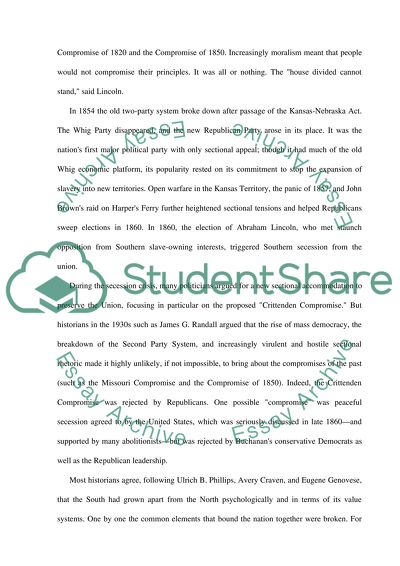Cite this document
(“The American Civil War: the main causes and reasons for the outcome Essay”, n.d.)
The American Civil War: the main causes and reasons for the outcome Essay. Retrieved from https://studentshare.org/miscellaneous/1502915-the-american-civil-war-the-main-causes-and-reasons-for-the-outcome
The American Civil War: the main causes and reasons for the outcome Essay. Retrieved from https://studentshare.org/miscellaneous/1502915-the-american-civil-war-the-main-causes-and-reasons-for-the-outcome
(The American Civil War: The Main Causes and Reasons for the Outcome Essay)
The American Civil War: The Main Causes and Reasons for the Outcome Essay. https://studentshare.org/miscellaneous/1502915-the-american-civil-war-the-main-causes-and-reasons-for-the-outcome.
The American Civil War: The Main Causes and Reasons for the Outcome Essay. https://studentshare.org/miscellaneous/1502915-the-american-civil-war-the-main-causes-and-reasons-for-the-outcome.
“The American Civil War: The Main Causes and Reasons for the Outcome Essay”, n.d. https://studentshare.org/miscellaneous/1502915-the-american-civil-war-the-main-causes-and-reasons-for-the-outcome.


